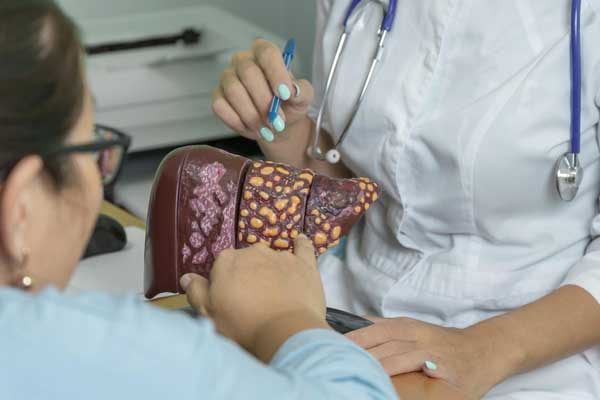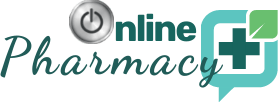The liver is a vital organ that performs many critical functions in your body. From metabolizing nutrients to filtering toxins, keeping your liver healthy is crucial. However, some widely used medications have the potential to cause liver damage. Being aware of these drugs and taking steps to safeguard your liver is key. This article explores common medications that affect the liver and provides tips to mitigate the risks.

Introduction to Drug-Induced Liver Injury
Drug-induced liver injury (DILI), also known as hepatotoxicity, refers to liver damage caused by prescription or over-the-counter medications, supplements, and herbal preparations. DILI can range from mild elevation in liver enzymes to severe life-threatening liver failure.
DILI is classified into two types:
- Predictable liver injury – Occurs shortly after drug use and is usually dose-dependent. For example, acetaminophen (paracetamol) overdose.
- Unpredictable liver injury – Also called idiosyncratic, these are rare adverse reactions not directly linked to the drug’s standard effects. Onset is variable but can occur 1-12 months after starting medication.
Multiple factors influence susceptibility to DILI like genetic variability, existing liver disease, taking multiple hepatotoxic drugs, dosage and duration of treatment. Diagnosis is made by blood tests, liver biopsy and history of exposure to suspect drugs.
Acetaminophen (Paracetamol)
Acetaminophen is an over-the-counter analgesic found in dozens of cold, cough and pain relief medications. Taken properly, it is safe. But, acetaminophen overdose is the most common cause of acute liver failure in many countries.
Acetaminophen is metabolized in the liver into non-toxic byproducts except one called NAPQI. Normally, NAPQI is neutralized by glutathione. But excessive doses of acetaminophen saturate the liver’s detoxification capacity causing NAPQI buildup. This damaged liver cells through oxidative stress and necrosis.
Liver injury progresses from elevated liver enzymes to severe hepatic necrosis and life-threatening liver failure without urgent treatment.
Tips to prevent acetaminophen-induced liver damage:
- Do not exceed maximum daily dose – For adults, 4000mg. Reduce dose if underweight or malnourished.
- Avoid combining acetaminophen products – Check active ingredients on over-the-counter drug labels.
- Limit duration of usage – Increased risk with prolonged use over weeks/months.
- Avoid alcohol – Potentiates liver toxicity.
- Follow dosage directions carefully, especially for children.
- Seek prompt medical help for overdose – Antidote treatment within 8 hours improves outcomes.
Antifungal Medications
Oral antifungal agents like fluconazole, terbinafine, and ketoconazole are associated with rare but serious liver injury. All antifungals carry some hepatotoxic risk, but ketoconazole and fluconazole appear most frequently in DILI registries.
Proposed mechanisms include:
- Toxic byproducts from antifungal metabolism in the liver
- Interactions with other hepatotoxic drugs
- Idiosyncratic immune-allergic reactions
Tips to prevent antifungal-induced liver damage:
- Monitor liver enzymes at baseline and periodically during treatment.
- Stop medication if liver injury is suspected.
- Avoid unnecessary long-term prophylaxis treatment courses.
- Consider less toxic antifungal alternatives, if available.
- Report any liver-related symptoms like jaundice to your doctor promptly.
Amoxicillin-Clavulanic Acid
Amoxicillin-clavulanic acid (Augmentin®) is a commonly prescribed antibiotic combination. It is implicated in 13-23% cases of drug-induced liver injury per registry data. Most cases are idiosyncratic reactions that are not dose-dependent.
Onset of liver injury typically occurs 1-6 weeks after starting treatment. Immunoallergic features like fever, rash and eosinophilia are common. Most cases resolve within 2-4 months after stopping the medication. However, severe or prolonged injury leading to liver failure can occasionally occur.
Tips to prevent amoxicillin–clavulanic acid hepatotoxicity:
- Consider alternative antibiotics when possible.
- Avoid in patients with history of liver disease or penicillin allergy.
- Stop immediately if symptoms like fever, rash or jaundice develop.
- Report prior liver reactions to any medication to your doctor.
- Finish the prescribed course properly to prevent antibiotic resistance.
Allopurinol
Allopurinol is commonly used long-term to treat gout and high uric acid levels. But it is linked to a high incidence of liver injury, especially in older patients on high doses.
The reaction typically occurs after 1-6 weeks of starting allopurinol. It follows an immunoallergic pattern with fever, rash, eosinophilia and progressive cholestatic hepatitis. Recovery can take weeks to months after stopping the drug.
Mortality rate approaches 10% in severe cases. Risk factors include pre-existing kidney disease, diuretic use and rapid dose escalation. HLA-B*5801 genetic marker also predicts susceptibility.
Tips to mitigate allopurinol-induced liver injury:
- Start with low dose and increase slowly.
- Avoid in kidney impairment or with diuretic therapy.
- Monitor for fever, rash, itching which can precede liver injury.
- Check baseline liver enzymes and repeat periodically during treatment.
- Stop immediately and do not restart if liver injury or hypersensitivity reactions occur.
Statins
Statins like atorvastatin (Lipitor®) are first-line cholesterol lowering medications taken by millions worldwide. Mild asymptomatic elevation in liver enzymes is reported in 0.5-2% of statin users.
Marked elevation over 3 times upper normal limit or symptomatic liver injury is very rare (2-7 cases per 100,000 statin patients). Risk is higher with advanced age, diabetes, metabolic syndrome, high-dose statin therapy and drug interactions.
Most liver injury occurs within 3-4 months of starting statin treatment but the latency period is highly variable. Patterns of liver damage range from hepatocellular to cholestatic or mixed injury. Discontinuation of the statin is necessary in symptomatic cases, which typically resolve within 1-4 months.
Tips for safe statin use:
- Check baseline liver enzymes. Monitor periodically during treatment.
- Use lowest effective statin dose. Increase gradually if needed.
- Avoid in active liver disease or unexplained persistent liver enzyme elevations.
- Report liver-related symptoms like jaundice, abdominal pain or itching.
- Discontinue statin and avoid restarting if significant liver injury develops.
Conclusion
Many widely used prescription and over-the-counter medications have the potential to cause liver damage. Being aware of the common culprit drugs and following dosage directions is key to protecting your liver health while on treatment. Speak to your doctor about any liver conditions you may have and closely monitor for any liver-related symptoms that develop. With vigilance, most medication-induced liver injury can be prevented or caught early to improve outcomes. Your liver is a vital asset, so safeguard it!
